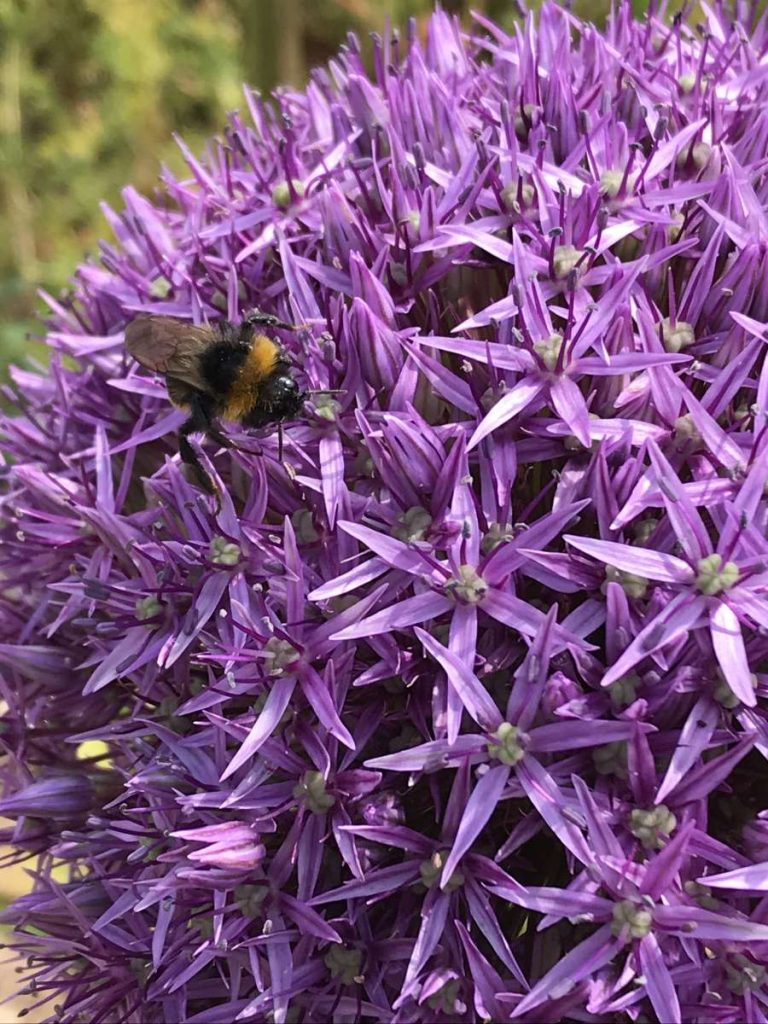Insects cannot survive without nectar and pollen. Flowers produce these two crucial substances. By planting bulbous flowers in our gardens and on our terraces and balconies, we can help insects find enough nectar and pollen.
A celebration
With their sparkling colours, spring-flowering bulbs are a real asset in the garden. As the garden awakens, they provide a cheerful note that cheers us up. It is a spring ritual that returns year on year, and that we – unconsciously – look forward to. But this ritual is not only a celebration for us, it is also an indispensable ceremony for insects.
Shortage
Insects like bees and butterflies need nectar and pollen to survive. But in early spring, there is not enough nectar and pollen to go around. This is because very little of the scarce greenery that is left is in bloom. But did you know that there are early-flowering bulbous plants that, compared with other garden plants, produce a lot of nectar and pollen?
A solution
Due to the shortage of pollen and nectar, the insect population is shrinking in variety and in quantity. If everyone who has a garden, terrace or balcony takes action, we can all contribute to preventing this reduction. So why not plant some spring-flowering bulbous plants for more flowers for these important little creatures?
Fuel
Nectar and pollen are released as early as January through the earliest flowering bulbous plants. Do you want to know which bulbous plants provide insects with food and thus increase biodiversity? We have listed the top 10 for you:
1. Anemone (Anemone blanda)
Anemones flower in March and April, with delicate purple-blue flowers. This bulbous plant mainly provides pollen for wild bees and honeybees.
2. Grape hyacinth (Muscari)
Bees absolutely adore grape hyacinths. Their grey pollen is loved by bumblebees, wild (mining) bees, honeybees and butterflies.

3. Crocus
Crocuses contribute to biodiversity because their open flowers make their pollen and nectar easily accessible to bees and early butterflies.
4. Daffodils (Narcissus)
Insects with a long tongue feast on nectar and pollen from daffodils. Did you know that the (wild) daffodil is a favourite among parasitic wasps and tachinids?

5. Springstar (Ipheion)
The soft pink, lilac, blue or white star-shaped flowers of springstar attract many different types of insects.
6. Allium
The convex shape of alliums allows several insects to feed on this flower at the same time. No wonder traffic often gets very busy on alliums.

7. Snowdrops (Galanthus)
Serene white snowdrops offer plenty of nectar and pollen for early-flying wild bees, honeybees and butterflies, from December to April.
8. Glory-of-the-Snow (Chionodoxa)
Glory-of-the-Snow flowers in early spring and is a source of both a pollen and nectar for various insects.
9. Winter Aconite (Eranthis)
Winter aconite is one of the earliest flowering tuberous plants. Fat bumblebees feast on their cheerful carpets of yellow, wide-open flowers.
10. Summer Snowflake (Leucojum aestivum)
Although still relatively unknown, summer snowflake is popular with insects. It thrives in damp places, for example, near ditches or on the edge of a pond.
Look out for our Bees & Butterflies Collection:
Pollinator Facts
- The amount of nectar a plant produces fluctuates throughout the day due to the change in the amount of moisture and sunlight.
- The three main pollinators of flowers are wild bees, hoverflies and butterflies.
- The effect of a shortage of nectar and pollen, and as a result, also insects, affects the entire chain; there is less food available for birds and small mammals.
- Nectar is a sugary, viscous liquid that consists of glucose, fructose and sucrose. Plants excrete this substance through their honey glands.
- Pollen is created in the flower’s male germ cells. It comes from the stamens.
- As early as February, many butterflies awaken from their hibernation. They start looking for sunny spots to warm up and lay their eggs.
- Bees and flies awaken at a temperature of 6 to 7 degrees Celsius. They immediately start foraging for food for their larvae.
- For a kilo of pollen, a bee has to fill her pollen baskets 50,000 to 100,000 times.
You can find RHS Perfect for Pollinator recommended bulb varieties by looking out for the logo:





